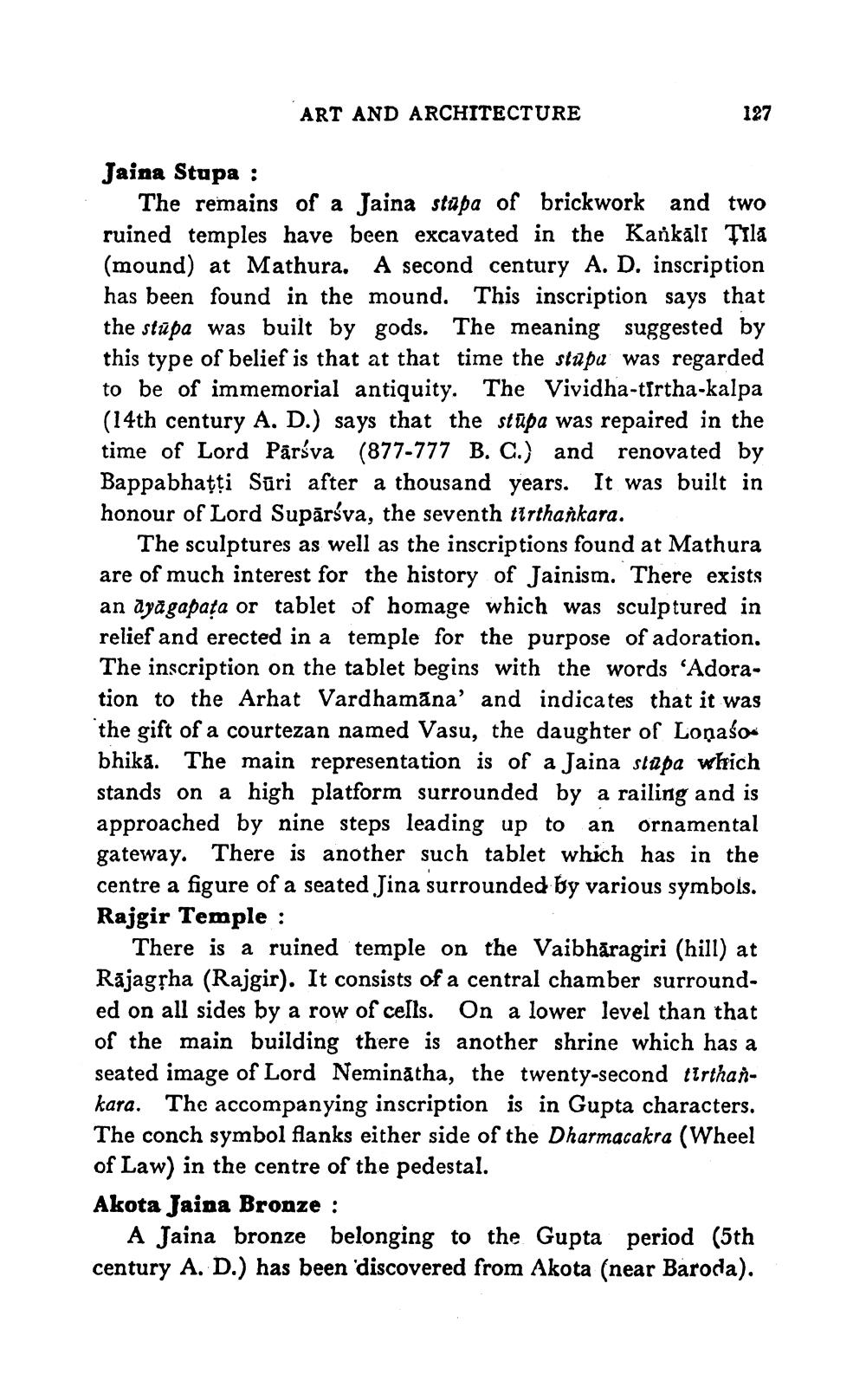________________
ART AND ARCHITECTURE
127
Jaina Stupa :
The remains of a Jaina stupa of brickwork and two ruined temples have been excavated in the Karkali Fila (mound) at Mathura. A second century A. D. inscription has been found in the mound. This inscription says that the stūpa was built by gods. The meaning suggested by this type of belief is that at that time the stupu was regarded to be of immemorial antiquity. The Vividha-tirtha-kalpa (14th century A. D.) says that the stūpa was repaired in the time of Lord Päráva (877-777 B. C.) and renovated by Bappabhatti Sūri after a thousand years. It was built in honour of Lord Supārsva, the seventh tirthankara.
The sculptures as well as the inscriptions found at Mathura are of much interest for the history of Jainism. There exists an ayagapata or tablet of homage which was sculptured in relief and erected in a temple for the purpose of adoration. The inscription on the tablet begins with the words 'Adoration to the Arhat Vardhamana' and indicates that it was the gift of a courtezan named Vasu, the daughter of Loņaso. bhika. The main representation is of a Jaina stapa which stands on a high platform surrounded by a railing and is approached by nine steps leading up to an ornamental gateway. There is another such tablet which has in the centre a figure of a seated Jina surrounded by various symbols. Rajgir Temple :
There is a ruined temple on the Vaibhāragiri (hill) at Rājagsha (Rajgir). It consists of a central chamber surrounded on all sides by a row of cells. On a lower level than that of the main building there is another shrine which has a seated image of Lord Neminatha, the twenty-second tirthankara. The accompanying inscription is in Gupta characters. The conch symbol flanks either side of the Dharmacakra (Wheel of Law) in the centre of the pedestal. Akota Jaina Bronze :
A Jaina bronze belonging to the Gupta period (5th century A. D.) has been discovered from Akota (near Baroda).




